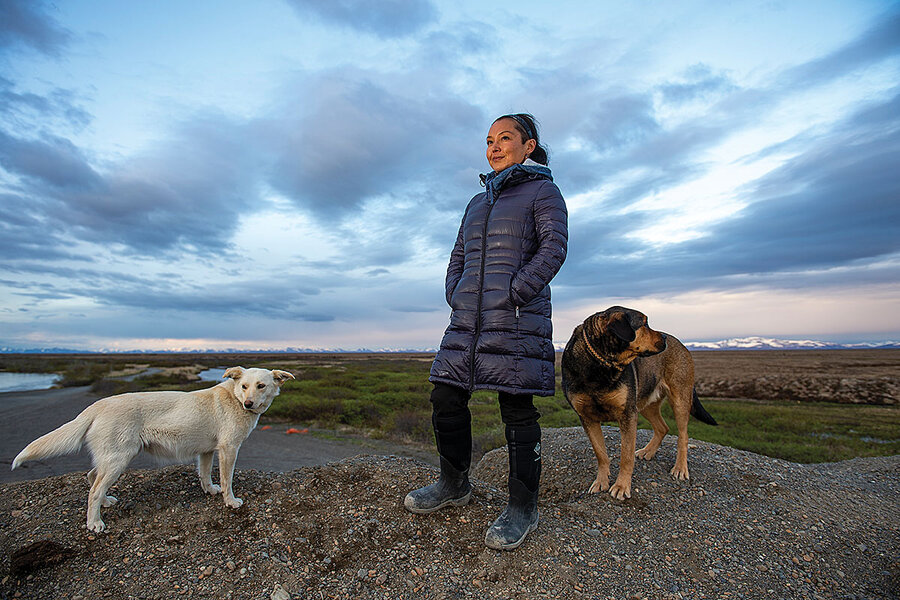Addressing the uncertainties of climate change
Loading...
Uncertainty threatens the very existence of Quinhagak, Alaska. The village is built on a layer of permanently frozen ground, and as a warming Earth rapidly turns that to soup and as rising oceans encroach, the unthinkable is looking increasingly inevitable: The town may have to move.
The story of Quinhagak, told in this week’s cover story by Simon Montlake, is in some ways tied to the town’s Arctic environment. But it also speaks to the fundamental tension in the wider debate about global warming: How do we handle uncertainty?
The degree of uncertainty matters. We know that a catastrophic asteroid collision could happen, but the uncertainty is high enough that society has not reordered itself to mitigate the risk. By contrast, for the people of Quinhagak, the uncertainty is shrinking by the year; a reckoning seems increasingly imminent. Elsewhere, the threat of global warming still lies somewhere in the middle.
The core challenge is that the immense complexity of Earth’s climate means modeling involves significant uncertainty. To some, that uncertainty puts climate change between “a mere annoyance and an existential threat,” as theoretical physicist Sabine Hossenfelder put it in a recent New York Times opinion article, suggesting the only answer is a massive investment in supercomputers.
But climate scientists say the uncertainty is already narrowing. “Where the uncertainty comes in is how soon some of these impacts will be felt – what will the world look like 20 years, or 50 years, or a century from now?” writes Roger Cohn, editor of the online magazine Yale Environment 360, in an email. “But there is a very strong scientific consensus that they will occur. ... Scientists already know that the impacts will be catastrophic in the future if we continue on the same trajectory.”
These uncertainties beget a similar spectrum of responses – from doubting the conclusions entirely to claims that the world is already doomed. How do you chart a course forward when uncertainties result in disagreement about the scope and urgency of the problem? One answer has been to accelerate efforts to convince societies that the threat is existential. Yet without the overwhelming evidence of disaster facing places like Quinhagak seen more broadly, skepticism has remained.
So do we need to wait until the uncertainty resolves itself? Is there no basis for collective action until then?
In his book “Enlightenment Now,” Harvard University professor Steven Pinker argues that the progress the world has made on health, wealth, and human rights comes from a clear formula: science, reason, and humanism. I would argue that the formula deepens when you exchange “humanism” for “humanity,” defined by Webster’s New World College Dictionary as “the fact or quality of being humane; kindness, mercy, sympathy.”
Can we talk about climate change that way? As science advances, can we use reason to examine policy choices and our own views honestly and with compassion, humility, and temperance – all qualities of humanity in its broader sense? Studies show that kind of discussion can do more to create unity than facts alone. And it also creates a firmer foundation to discuss the uncertainties that remain.






